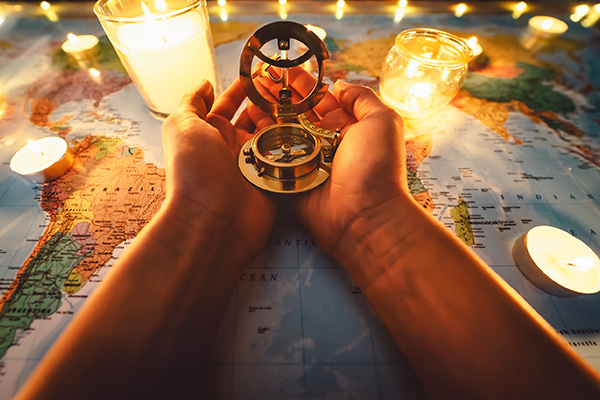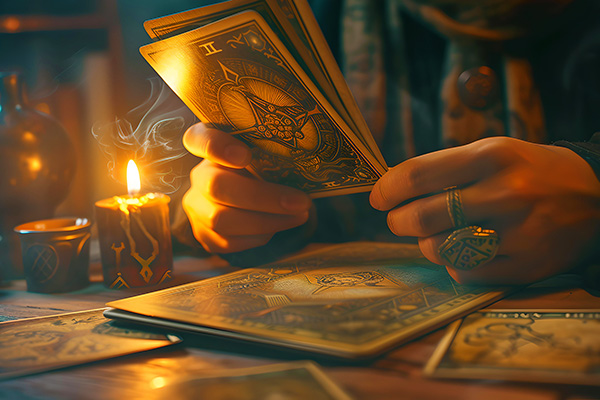Indicators That You Could Be Clinging to the Incorrect Individual
 Numerous inquiries from callers during readings frequently share a common theme: how another individual is impacting their wellbeing, joy, and tranquility.
Numerous inquiries from callers during readings frequently share a common theme: how another individual is impacting their wellbeing, joy, and tranquility.
Even with variations in specifics, the fundamental narrative tends to remain the same: a person’s inner radiance is subdued as they relinquish too much authority to someone else’s decisions, moods, or flaws.
Many individuals appear to find themselves in unsuitable relationships. They cling on, hoping for change and waiting for the best to come. They defer their plans, stifle their own desires and preferences, and push the boundaries of their endurance, expecting a breakthrough to occur soon.
Yet, this is typically not the outcome. People rarely change for someone else, and if they do, it seldom endures or succeeds over time. A transformation motivated by the desire to satisfy another person rarely holds up against the pressures of reality. Once challenges emerge, old behaviors resurface. Change can only happen for oneself.
Spirit’s advice on this matter is consistently explicit: holding onto the wrong individual — be it a friend, family member, spouse, partner, lover, or superior — hinders us from experiencing the finest life has to offer.
When we focus our energy on monitoring someone else’s behavior, our capacity for personal and spiritual development diminishes. This blocks the incredible opportunities that await us, not because the universe is ‘stingy,’ but due to our time and attention being fully occupied.
One of the most common justifications is (yes, I state it plainly): “But I care for her so deeply!” or, “Oh, I can’t imagine life without him.”
Be mindful not to treat others’ hearts carelessly, and do not tolerate individuals who treat yours carelessly ~ Kurt Vonnegut
Some individuals recite these sentiments like personal affirmations, believing that love or need takes precedence over everything else. These are simply rationalizations to shy away from taking a leap toward a better existence and entering a healthier relationship. They serve merely to postpone tough choices and to convince themselves that endurance equates to commitment.
In reality, these justifications may keep them ensnared in an uncomfortable scenario and hinder their escape from harmful patterns. They are excuses that permit individuals to cling to the anguish in their lives while attributing the blame to someone else.
We alone dictate how our lives progress—or stagnate. We cannot anticipate someone else to evolve into what we wish them to be.
When you say that someone is causing your depression, that is a misunderstanding. You are permitting someone to harm you and influence you in a manner that contradicts your true self. Acknowledging this does not imply you are to blame for the mistreatment, but it signifies you hold the power to change how often it impacts you.
You have the choice to reclaim control. You can simply sever ties and depart. However, many opt to remain in a state of unrest and despondency while yearning for change. Waiting may seem easier initially. Confrontation may feel daunting. Yet, the longer you linger, the more burdensome the situation becomes, and the more distant your own needs appear.
Life is meant to be fully experienced. You are meant to savor every moment to the fullest. You are meant to pursue every moment for your highest good. You are meant to be joyful, fulfilled, and overflowing with love and happiness. However, these elements must originate from within yourself primarily.
May you achieve that inner realm where you no longer permit your past or those with harmful intentions to adversely condition or influence you ~ Lalah Delia
Then, others in your life can positively contribute to every aspect of your existence. If they attempt to diminish you or make you feel inferior, simply cut ties and move on. No justifications are permissible. Growth rarely coexists with consistent belittlement.
It’s time to evolve into the remarkable person you are destined to be. Stand firm, disengage, and welcome the right people, employment, and surroundings into your life so you can thrive and develop. This is how spirit and the divine envision your life.
Take a quiet moment today to reflect on your life and the individuals who inhabit it. Pause after each encounter long enough to recognize how you genuinely feel—revitalized, neutral, or drained. This process can be daunting, especially with long-standing relationships that seem almost sacred; yet, duration alone doesn’t guarantee mutual respect or a positive impact.
Approach this evaluation sincerely and one item at a time — one individual, one job, one circumstance. Breaking down the process into smaller tasks helps prevent overwhelm and allows you to notice patterns you might overlook if you attempted to evaluate everything simultaneously.
Clinging to negative individuals and toxic relationships will drag you down to their level or control you in a detrimental manner. Minor grievances accumulate. Waiting for improved behavior robs hours that could otherwise be invested in building confidence, friendships, or a new career.
It’s time to rise and embrace the extraordinary person you were destined to become. However, only you can accomplish this. No one else can create the scenario you seek — it rests in your hands. Are you ready to undertake the work?
A detrimental relationship resembles standing on shattered glass; if you remain, you will continually hurt. If you depart, you may feel pain, but ultimately, you will heal ~ Autumn Kohler
Indicators They’re Not The Right Person
Here’s how to commence. Evaluate the impact of each relationship on your health, happiness, and emotional wellness. Work through the following questions one relationship at a time. Your candid responses will provide a clear snapshot of whether the connection fosters your growth or hinders it.
Energy After-Effect: Do you feel fatigued, tense, or anxious after spending time with them?
Goal Progress: Have your personal or professional aspirations stagnated since the relationship commenced?
Honest Expression: Do you suppress your true feelings to prevent conflict?
Immediate Reaction: Does seeing their name on your phone induce anxiety?
Self-Perception: Are you pleased with the version of yourself that emerges around them?
Support Level: When you succeed, do they acknowledge and encourage you, or downplay and compete with you?
Boundary Respect: Do they consistently adhere to your boundaries?
Recurring Issues: Are you experiencing the same unresolved argument repeatedly?
Future Outlook: When envisioning the next five years, does including this individual feel reassuring or overwhelming?
Status-Quo Test: If nothing changed from this point onward, would you still choose to remain in the relationship?
Cease making excuses like “but I care for him.” Love is genuine, but it cannot protect against negativity. Stand up and allow the finest blessings to enter your life by freeing yourself from the restraints that hold you back.
Every time you detach from a toxic connection, you convey a message to every facet of your being that you deserve tranquility and mutual respect. The journey may feel strange initially, but it clears the way for authentic support and shared joy.
|
Sheri is an international psychic and angel reader who provides clear answers on finance, career, relationships, manifesting your dreams, and working-out the kinks of life. Since 2004, Sheri is the owner of an International Spiritual Healing Centre where she runs her Reiki practice – either working on clients or teaching them the levels of Usui Reiki. She utilizes her office space for readings that are conducted via mail, phone, chat or live. Since 2008, she’s honed her gifts on various psychic service websites, offering telephone, chat or email readings. She also works on a spiritual network for individuals who have endured horrific loss, applying her own firsthand experiences with such tragedies. Sheri’s work has been described as honest, compassionate, and life-transforming, and she aspires to see all her clients soar free to higher levels of spirituality and growth while exponentially changing the world for the better. You can get a psychic reading from Sheri at PsychicAccess.com. |
Relationships can bring joy and fulfillment, but they can also create stress and unhappiness if you are with the wrong individual. Coming to terms with the potentiality of holding onto the wrong person can be challenging, yet recognizing the indicators is crucial for fostering positive transformation in your life.
One crucial sign that you may be clinging to the wrong person is if you consistently feel unhappy or unsatisfied within the relationship. If you notice a prevalence of negative emotions over positive ones during your time with your partner, it could indicate that they are not the right match for you. It’s essential to be attentive to your feelings and heed your instincts when it concerns relationships.
Another indication that you might be maintaining a relationship with the wrong individual is if you feel compelled to repeatedly compromise your values or beliefs to make things work. Being with someone who respects and supports you for who you are is vital, rather than someone who attempts to alter you or makes you feel inadequate. If you routinely find yourself sacrificing your happiness for the sake of the relationship, it might be time to reassess whether this person is genuinely right for you.
Moreover, if you find yourself justifying your partner’s actions or defending them consistently to others, it may signal that you are clinging to the wrong individual. It’s essential to be with someone who treats you with dignity and kindness, rather than someone who frequently disappoints you or causes you distress. If you find yourself continually making excuses for your partner’s behavior, it may point to the presence of a toxic or unhealthy relationship.
Ultimately, trusting your instincts and listening to your gut about the relationship is critical. If you feel unhappy, unfulfilled, or consistently compromising your values in your relationship, it may suggest that you are holding onto the wrong person. Prioritizing your comfort and well-being in relationships is paramount, and being with someone who genuinely values and respects you is vital. If you identify any of these signs in your relationship, consider having a conversation with your partner about your feelings and reflect on whether the relationship is truly meaningful for you. Remember, it’s never too late to initiate positive changes in your life and prioritize your own happiness and wellbeing. Continue reading















